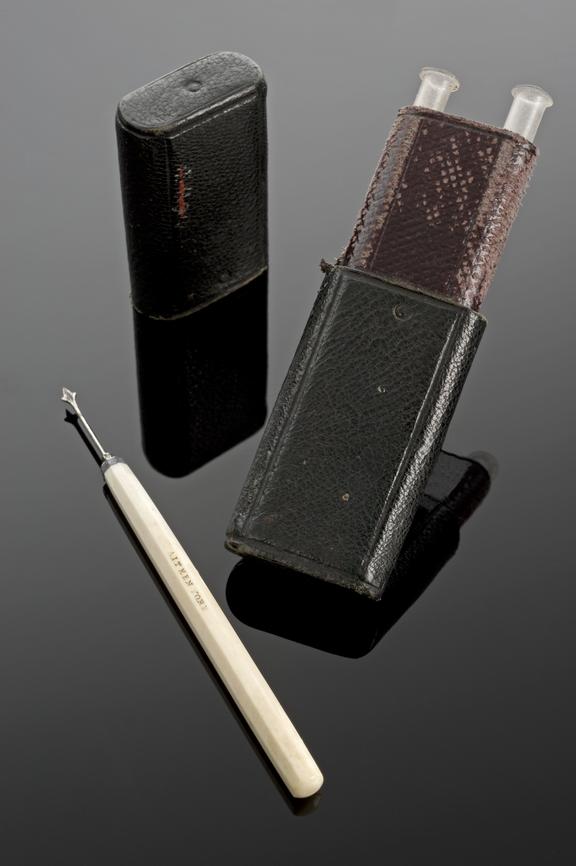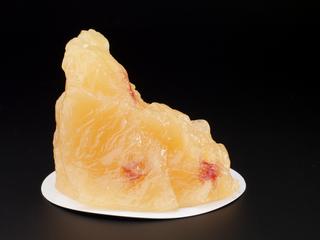
Spratley-type vaccinator, York, England, 1820-1910
- maker:
- Company, Henry Aitken and

Spratley vaccinator, cased, by Aitken, English, 1801-1900
The Spratley vaccinator used for smallpox vaccination has a spear-like head to prevent the blade going too deep into the skin. The blade would have been dipped in lymph material from a smallpox pustule. Pustules are skin blisters filled with pus that appear approximately five to eight days after vaccination. The blade would then be used to vaccinate another person. This type of arm-to-arm vaccination was made illegal in 1898, as it could transmit other diseases such as syphilis. Specially prepared animal lymph was used instead. Vaccination did not give life-long immunity and had to be repeated.
Details
- Category:
- Public Health & Hygiene
- Collection:
- Sir Henry Wellcome's Museum Collection
- Object Number:
- A600047
- Materials:
- case, leather, blade, steel, handle, ivory and tubes, glass
- Measurements:
-
overall: 12 mm x 96 mm x 27 mm, .02kg
- type:
- vaccinator
- credit:
- Wellcome Trust (Purchased from Stevens)




